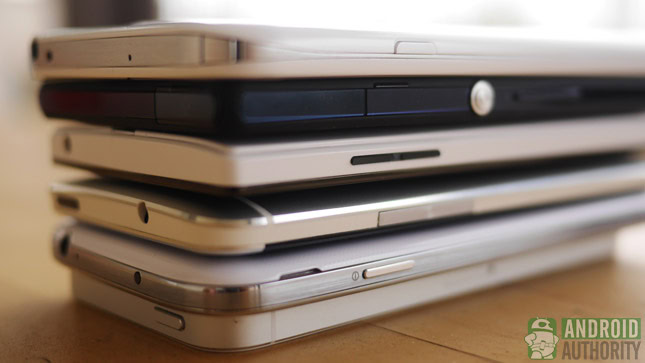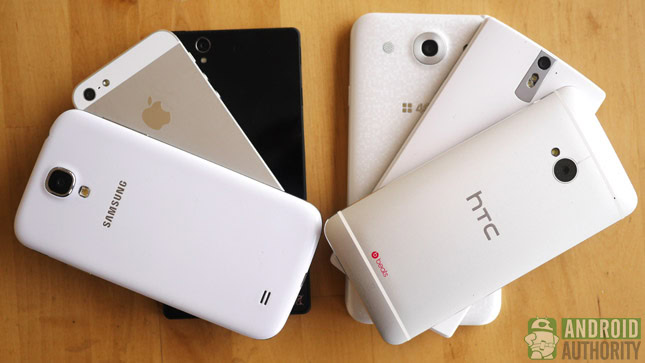Affiliate links on Android Authority may earn us a commission. Learn more.
How long should a smartwatch last?

It’s still the early days for smartwatches. With the first few Android Wear devices on the market and a 3rd one on the horizon we have a pretty good glimpse of what wearables might be like. Android Wear is exciting and feels generations ahead of what came before it. But like any burgeoning technology, the hardware and software are going to grow exponentially with each generation.
As somebody who would want to buy a smartwatch, it might be important to consider how long they will last before becoming obsolete. After all, $200 being the low end, it’s hardly an impulse buy for most people. Just how long will a generation be for smartwatches? That’s a difficult thing to determine for a new category but the best way might be to look at other similar markets.
What came before

The most obvious comparison to make is to other existing smartwatches. The original Pebble came out in early 2013 and a year later the Pebble Steel was released with a software update for both.
While Pebble released two devices in one year Samsung has done it at a considerably faster pace. The Galaxy Gear came out in late 2013 and the Gear 2 arrived six months later in conjunction with the Gear 2 Neo and Gear fit. The Galaxy Gear ran a version of Android while the sequels ran Tizen-based software – only to be usurped by the Gear Live running Android Wear two months later.
While most tech companies make new hardware yearly, the true generational shifts often come when the latest software doesn’t support old devices. That’s typically when a product becomes obsolete because there is no longer a promise of improvement. So while there have been two Pebble watches, functionally they’re so similar that there hasn’t really been a true second generation. Contrast this with Samsung and there have been two generations of Gear watches that have become obsolete in that same period of time (although Samsung could continue to support the Tizen software simultaneously with Android Wear).
The business of longevity

But not all product life-cycles mimic such short and erratic schedules. Smartphones are generally replaced every two years because of contract pricing and early termination fees, both of which are carry overs from the dumb cell phone era. On the positive side this allows phone makers to iterate and refine their phones as well as providing some guarantee of value to customers who would like their brand new device to be updated over the course of it’s life. In recent years though, more manufacturers are designing cheaper, off-contract options, that allow much more flexibility so that, in the future, that model may well change.
Laptops and desktops tend to have longer life-cycles simply because of price. Most people spending a grand or more on a computer would probably want it to work for as long as possible and while future proofing is impossible, you can reasonably expect to get four or more years of value from your purchase provided you temper your expectations over time.
The role of consumer expectations

But even beyond strict contracts and up front price, some products have life-cycles determined by traditional consumer expectations. Video game consoles tend to last as long as 6 or 7 years, extending well beyond the hardware’s capability and driven mostly by software sales.
The best part about this system is that consoles also gain more software improvements than just about any other technology over their lifetime. Remember the original dashboard of the XBOX 360 with the blade menus? It’s is almost unrecognizable compared the Windows 8 style tile interface of the later years. The bad part of the longevity is that while developers are allowed to squeeze every last ounce of power from the well known hardware, at some point, the games themselves become limited by it.
Similarly, what may end up being the most important aspect for determining Android Wear life-cycles is simply what consumers expect from their $200 or $300 purchase. The common wisdom is usually to never buy a first generation device and judging from early feedback about the LG G Watch and Samsung Gear Live, that might be the smart choice for now. The market is still in its infancy and we haven’t figured out what is acceptable functionality from a hardware or software perspective.
Betting on the right horse

Again, this will ultimately be determined by you and me. The smartwatch is unique because it must straddle the line between two finicky markets – fashion and technology. Today the Moto 360’s circular display, leather strap, and metal bezel might look refined and chic, but trends might dictate a different feeling in two or three years. By the same token, the colorful display and card interface taken from Google Now might reflect what is best in today’s hardware and UI design but could become archaic within a few years.
What is awesome about new gadgets, like smartwatches, is that they give us a possible glimpse into the very near future. The problem is that the future is always in motion and what seems like the right prediction one day could be proven wrong very quickly. Whether or not the life-cycle of a smartwatch will be one year or five years, Android Wear has shown us Google’s vision of a wearable-centric future. The only question is, will you bet $200 on it to make it a reality?